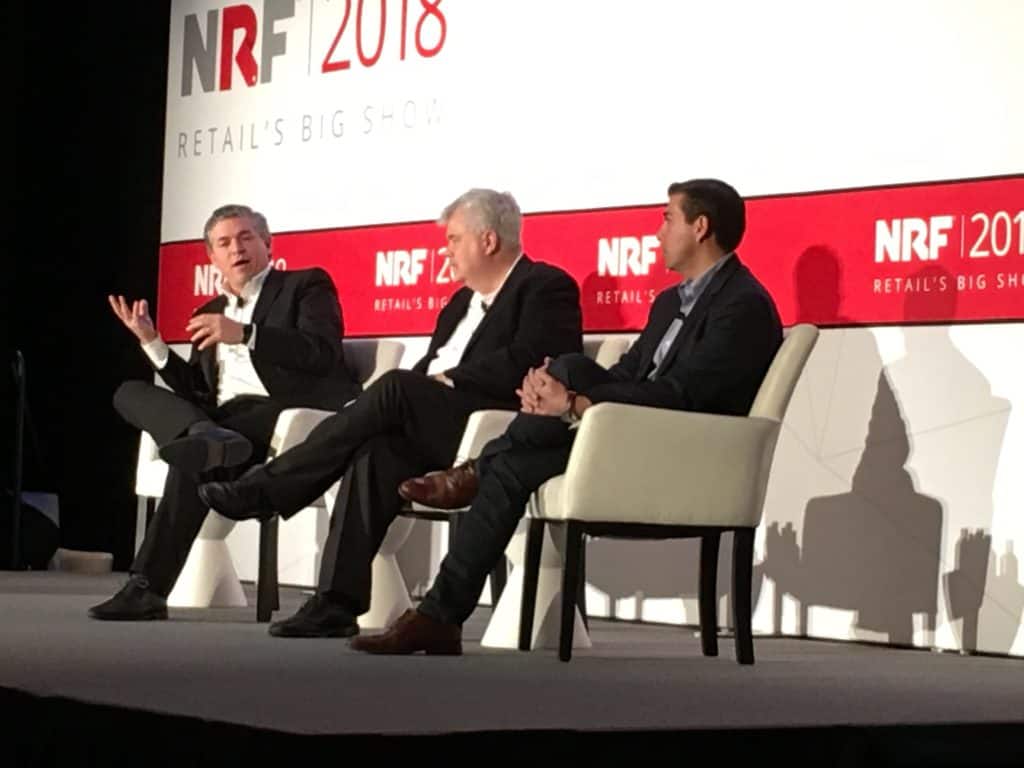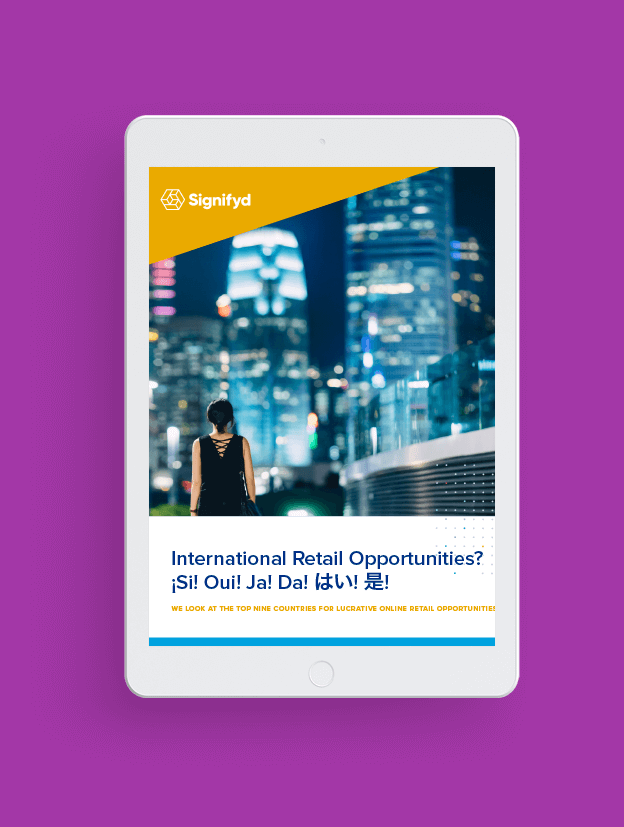Every business has inflection points, those Kodak moments that come with the promise of bold growth, new markets and increased profitability.
For online merchants, a key and common inflection point is whether to expand into international markets. It’s the world we live in, quite literally. Demand for products is not hemmed in by borders. Ecommerce means there is no need to literally land and expand by buying or leasing brick-and-mortar stores.
And yet, there isn’t much that is easy about taking the first steps to becoming a global retail brand, a point made clear by three retail experts who on Monday presented, “Powerhouse playbook: Lessons from global retail leaders” at the National Retail Federation’s annual trade show.
David Marcotte, of Kantar Retail, WPP, said it’s almost a natural development, the desire to go global. A retailer has been successful in the United States. Its growth has been significant. It’s hungry for new markets. Why wouldn’t the world love them?
But Marcotte said, it turns out that 95 percent of retailers who make an international move fail.
International ecommerce comes with big challenges
The challenges are legion: Regulations and rules are different. There are the questions around tariffs and taxes. You need to figure out where your products are going to come from. There are cultural questions that touch on how your shoppers want to shop and how your employees want to work.
There are the perils of moving into a new market. Do you understand buying behavior? Do you have enough data describing your new customers so you have insight into which online orders are legitimate and which are being placed by fraudsters taking advantage of the new kid?
And there is at least one other significant consideration for retailers, Marcotte said: “The brand is intrinsic to how they do business. That brand has to translate into the culture. If you can get aligned with the brand element of it, then you have a chance in terms of how you’re going to move forward with it.”
Juan Carlos Garcia and Martin Urrutia Islas both have experience in working to align a retail brand in a new country. Garcia, who worked for Amazon and Walmart, is global ecommerce director for Groupo Elektra, a general merchandise retailer and financial services company in Mexico and the United States. Islas is head of retail innovation for the Lego Group.

Garcia laid out some of the missteps from his days leading Amazon into Mexico, explaining that the Seattle-based company failed to fully appreciate local factors that were specific to the country they were serving. Mexicans tend to buy on installment. Amazon offered no installment plan. Mexican consumers like to pay cash. Amazon didn’t accommodate that.
And there were delivery hiccups. For instance, when Amazon tried to send cosmetics and non-prescription medication to Mexican consumers, the shipments were stopped at the boarder because of laws about such consumer goods. Walmart, on the other hand, worked with suppliers in Mexico, Garcia said.
And there were the porch pirates.
“You cannot have unattended delivery,” he said. “You cannot leave a big TV box outside the house of the customer. Boxes disappear.”
Get help to become a successful global retail brand
Which, of course, is not a problem unique to Mexico, but the point is merchants expanding globally don’t only have to be aware of local conditions, they have to be ready to adapt to them.
So, how does a merchant get a handle on new markets, new customers, all the local variables? Get help. Work with those who understand the market. Find those who can navigate shipping, taxes and tariffs. Enlist fraud-management experts.
And, don’t forget a key reason you’re expanding in the first place: Serving consumers. Lego’s Islas says that is a key to the expansion efforts at Lego, which has a presence in 140 countries.
“We actually went and talked to shoppers, talked to consumers,” he said, of the opening of a London store.
“It’s great that you have, in the headquarters, your own ideas, but talk to the shoppers. They are actually the best person to tell you what’s good for your brand and what should be in your store.”
Islas focuses primarily on brick-and-mortar stores, but his advice applies to online shops as well. And it turns out, establishing an online presence can be a key to launching a successful international expansion.
“Sometimes online is the best way to test the waters,” Elektra’s Garcia said. “If I start shipping cross-border to different countries and have good demand, well, that is the best indication that you might be able to succeed in that country.”
It’s a big decision. But, then again, those made at one of those big inflection points always are.
Photos by Mike Cassidy
Contact Mike Cassidy at [email protected]; follow him on Twitter at @mikecassidy.









